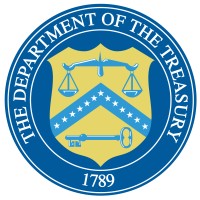
Ministry of Defence of India Company Cyber Security Posture
onlinecareer360.comThe Government of India is responsible for ensuring the defence of India and every part thereof. The Supreme Command of the Armed Forces vests in the President. The responsibility for national defence rests with the Cabinet. This is discharged through the Ministry of Defence, which provides the policy framework and wherewithal to the Armed Forces to discharge their responsibilities in the context of the defence of the country. The Raksha Mantri (Defence Minister) is the head of the Ministry of Defence. The principal task of the Defence Ministry is to obtain policy directions of the Government on all defence and security related matters and communicate them for implementation to the Services Headquarters, Inter-Services Organisations, Production Establishments and Research and Development Organisations. It is also required to ensure effective implementation of the Government's policy directions and the execution of approved programmes within the allocated resources. Ministry of Defence comprises of four Departments viz. Department of Defence (DOD), Department of Defence Production (DDP), Department of Defence Research & Development (DDR&D) and Department of Ex-Servicemen Welfare and also Finance Division.
MDI Company Details
ministry-of-defence_india
4932 employees
15757.0
922
Government Administration
onlinecareer360.com
Scan still pending
MIN_2033262
In-progress
Between 900 and 1000
This score is AI-generated and less favored by cyber insurers, who prefer the TPRM score.
 MDI Global Score
MDI Global Score.png)

Ministry of Defence of India Company Scoring based on AI Models
| Model Name | Date | Description | Current Score Difference | Score |
|---|---|---|---|---|
| AVERAGE-Industry | 03-12-2025 | This score represents the average cybersecurity rating of companies already scanned within the same industry. It provides a benchmark to compare an individual company's security posture against its industry peers. | N/A | Between 900 and 1000 |
Ministry of Defence of India Company Cyber Security News & History
| Entity | Type | Severity | Impact | Seen | Url ID | Details | View |
|---|---|---|---|---|---|---|---|
| Ministry of Defence of India | Data Leak | 60 | 3 | 03/2018 | MIN1939622 | Link | |
Rankiteo Explanation : Attack with significant impact with internal employee data leaksDescription: A private vendor previously employed by the ministry of defense may have walked away with the personal data of 50 lakh ex-servicemen. ECHS was requested vide D/o ESW (Ex-servicemen welfare) aforesaid note dated 16.03.2018 for taking necessary action within three days on the issues raised by Commodore Batra (Retd). However, after lapsing the three days’ time, action taken report/status on the above subject is still awaited from CO, ECHS. ECHS cannot comment whether a copy of the same has been retained by the company or not. | |||||||
Ministry of Defence of India Company Subsidiaries

The Government of India is responsible for ensuring the defence of India and every part thereof. The Supreme Command of the Armed Forces vests in the President. The responsibility for national defence rests with the Cabinet. This is discharged through the Ministry of Defence, which provides the policy framework and wherewithal to the Armed Forces to discharge their responsibilities in the context of the defence of the country. The Raksha Mantri (Defence Minister) is the head of the Ministry of Defence. The principal task of the Defence Ministry is to obtain policy directions of the Government on all defence and security related matters and communicate them for implementation to the Services Headquarters, Inter-Services Organisations, Production Establishments and Research and Development Organisations. It is also required to ensure effective implementation of the Government's policy directions and the execution of approved programmes within the allocated resources. Ministry of Defence comprises of four Departments viz. Department of Defence (DOD), Department of Defence Production (DDP), Department of Defence Research & Development (DDR&D) and Department of Ex-Servicemen Welfare and also Finance Division.
Access Data Using Our API

Get company history
.png)
MDI Cyber Security News
Indian Army tightens cybersecurity after defence-linked websites come under attack
After a wave of cyberattacks on Indian defence-linked websites, the Army is stepping up efforts to bolster its digital defences.
How to Get the Most Out of the U.S.-Indian Defense Partnership
The Trump administration can boost India's capacity for burden-sharing by accelerating the pace of defense technology cooperation, defense trade deals, and ...
If you lose your design, you lose everything: Principal advisor to MoD on cyber confidentiality
This initiative launched by Lisianthus Tech, aims to create a central cybersecurity centre of Excellence in India that focuses on AI-driven ...
More cyberattacks from Pakistan-based groups come to light
Defence Secretary meets PM Modi as Pakistan Cyber Force targets Indian defence websites, prompting enhanced cybersecurity measures.
India, Malaysia expand defence ties, focus on AI, cyber security
India and Malaysia have strengthened their defence partnership and aim to enhance cooperation in emerging areas such as cyber security and ...
Centre reviews border, health, cyber security preparedness amid escalting tensions with Pakistan
The central government on Friday reviewed border securities, health and cybersecurity preparedness as tensions with Pakistan along the ...
Cyber Attack Alert India: Pakistani Hackers Target Defence Websites After Pahalgam Terror Attack
Cybersecurity Breach India: Pakistani hackers deface Indian defence websites, access sensitive data post-Pahalgam attack; govt boosts cyber ...
Pakistani cyber attackers claim they hacked Indian defence websites, think tank denies report
Pakistan Cyber Force, a handle on X, has claimed that its hackers gained access to sensitive information of the Military Engineer Services ...
Pakistan’s Repeated Cyber Provocations: ISI-Linked Cyber Offensive Targets Indian Defence Data, Defaces MoD PSU Website
The breaches have heightened concerns about cyber warfare tactics, particularly those employed by state-backed actors.

MDI Similar Companies

Pittwater Council
Transport for NSW is a state government agency that leads the development of a safe, efficient, integrated transport system. Pittwater Council was a local government area on the northern beaches of Sydney, New South Wales, Australia. It covered an area of 125 sq. km, including the Pittwater Water

Ministry of Health Saudi Arabia
The Ministry of Health (MOH), by way of its objectives, policies and projects included in this strategy, seeks to accomplish a promising future vision; namely, delivering best-quality integrated and comprehensive healthcare services. Carrying health conditions or health status of Saudi inhabitants t

South African Revenue Service (SARS)
Its main functions are to: collect and administer all national taxes, duties and levies; collect revenue that may be imposed under any other legislation, as agreed on between SARS and an organ of state or institution entitled to the revenue; provide protection against the illegal importation

City of Toronto
The City of Toronto is committed to fostering a positive and progressive workplace culture, and strives to build a workforce that reflects the citizens it serves. We are committed to building a high performing public service, with strong and effective leaders to enable service excellence, through hi

Comunidad de Madrid
Si necesitas información general y especializada sobre los servicios públicos madrileños puedes llamar al teléfono de Atención al Ciudadano 012. En la Comunidad de Madrid estamos encantados de recibir comentarios y favorecer el diálogo, por eso te proponemos unas normas básicas de participación:

U.S. Department of the Treasury
The Treasury Department is the executive agency responsible for promoting economic prosperity and ensuring the financial security of the United States. The Department is responsible for a wide range of activities such as advising the President on economic and financial issues, encouraging sustainabl

Frequently Asked Questions (FAQ) on Cybersecurity Incidents
MDI CyberSecurity History Information
Total Incidents: According to Rankiteo, MDI has faced 1 incidents in the past.
Incident Types: The types of cybersecurity incidents that have occurred include ['Data Leak'].
Total Financial Loss: The total financial loss from these incidents is estimated to be {total_financial_loss}.
Cybersecurity Posture: The company's overall cybersecurity posture is described as The Government of India is responsible for ensuring the defence of India and every part thereof. The Supreme Command of the Armed Forces vests in the President. The responsibility for national defence rests with the Cabinet. This is discharged through the Ministry of Defence, which provides the policy framework and wherewithal to the Armed Forces to discharge their responsibilities in the context of the defence of the country. The Raksha Mantri (Defence Minister) is the head of the Ministry of Defence. The principal task of the Defence Ministry is to obtain policy directions of the Government on all defence and security related matters and communicate them for implementation to the Services Headquarters, Inter-Services Organisations, Production Establishments and Research and Development Organisations. It is also required to ensure effective implementation of the Government's policy directions and the execution of approved programmes within the allocated resources. Ministry of Defence comprises of four Departments viz. Department of Defence (DOD), Department of Defence Production (DDP), Department of Defence Research & Development (DDR&D) and Department of Ex-Servicemen Welfare and also Finance Division..
Detection and Response: The company detects and responds to cybersecurity incidents through {description_of_detection_and_response_process}.
Incident Details
Incident 1: Ransomware Attack
Title: {Incident_Title}
Description: {Brief_description_of_the_incident}
Date Detected: {Detection_Date}
Date Publicly Disclosed: {Disclosure_Date}
Date Resolved: {Resolution_Date}
Type: {Type_of_Attack}
Attack Vector: {Attack_Vector}
Vulnerability Exploited: {Vulnerability}
Threat Actor: {Threat_Actor}
Motivation: {Motivation}
Incident 2: Data Breach
Title: {Incident_Title}
Description: {Brief_description_of_the_incident}
Date Detected: {Detection_Date}
Date Publicly Disclosed: {Disclosure_Date}
Date Resolved: {Resolution_Date}
Type: {Type_of_Attack}
Attack Vector: {Attack_Vector}
Vulnerability Exploited: {Vulnerability}
Threat Actor: {Threat_Actor}
Motivation: {Motivation}
Common Attack Types: As of now, the company has not encountered any reported incidents involving common cyberattacks.
Identification of Attack Vectors: The company identifies the attack vectors used in incidents through {description_of_identification_process}.
Impact of the Incidents
Incident 1: Ransomware Attack
Financial Loss: {Financial_Loss}
Data Compromised: {Data_Compromised}
Systems Affected: {Systems_Affected}
Downtime: {Downtime}
Operational Impact: {Operational_Impact}
Conversion Rate Impact: {Conversion_Rate_Impact}
Revenue Loss: {Revenue_Loss}
Customer Complaints: {Customer_Complaints}
Brand Reputation Impact: {Brand_Reputation_Impact}
Legal Liabilities: {Legal_Liabilities}
Identity Theft Risk: {Identity_Theft_Risk}
Payment Information Risk: {Payment_Information_Risk}
Incident 2: Data Breach
Financial Loss: {Financial_Loss}
Data Compromised: {Data_Compromised}
Systems Affected: {Systems_Affected}
Downtime: {Downtime}
Operational Impact: {Operational_Impact}
Conversion Rate Impact: {Conversion_Rate_Impact}
Revenue Loss: {Revenue_Loss}
Customer Complaints: {Customer_Complaints}
Brand Reputation Impact: {Brand_Reputation_Impact}
Legal Liabilities: {Legal_Liabilities}
Identity Theft Risk: {Identity_Theft_Risk}
Payment Information Risk: {Payment_Information_Risk}
Average Financial Loss: The average financial loss per incident is {average_financial_loss}.
Commonly Compromised Data Types: The types of data most commonly compromised in incidents are {list_of_commonly_compromised_data_types}.
Incident 1: Ransomware Attack
Entity Name: {Entity_Name}
Entity Type: {Entity_Type}
Industry: {Industry}
Location: {Location}
Size: {Size}
Customers Affected: {Customers_Affected}
Incident 2: Data Breach
Entity Name: {Entity_Name}
Entity Type: {Entity_Type}
Industry: {Industry}
Location: {Location}
Size: {Size}
Customers Affected: {Customers_Affected}
Response to the Incidents
Incident 1: Ransomware Attack
Incident Response Plan Activated: {Yes/No}
Third Party Assistance: {Yes/No}
Law Enforcement Notified: {Yes/No}
Containment Measures: {Containment_Measures}
Remediation Measures: {Remediation_Measures}
Recovery Measures: {Recovery_Measures}
Communication Strategy: {Communication_Strategy}
Adaptive Behavioral WAF: {Adaptive_Behavioral_WAF}
On-Demand Scrubbing Services: {On_Demand_Scrubbing_Services}
Network Segmentation: {Network_Segmentation}
Enhanced Monitoring: {Enhanced_Monitoring}
Incident 2: Data Breach
Incident Response Plan Activated: {Yes/No}
Third Party Assistance: {Yes/No}
Law Enforcement Notified: {Yes/No}
Containment Measures: {Containment_Measures}
Remediation Measures: {Remediation_Measures}
Recovery Measures: {Recovery_Measures}
Communication Strategy: {Communication_Strategy}
Adaptive Behavioral WAF: {Adaptive_Behavioral_WAF}
On-Demand Scrubbing Services: {On_Demand_Scrubbing_Services}
Network Segmentation: {Network_Segmentation}
Enhanced Monitoring: {Enhanced_Monitoring}
Incident Response Plan: The company's incident response plan is described as {description_of_incident_response_plan}.
Third-Party Assistance: The company involves third-party assistance in incident response through {description_of_third_party_involvement}.
Data Breach Information
Incident 2: Data Breach
Type of Data Compromised: {Type_of_Data}
Number of Records Exposed: {Number_of_Records}
Sensitivity of Data: {Sensitivity_of_Data}
Data Exfiltration: {Yes/No}
Data Encryption: {Yes/No}
File Types Exposed: {File_Types}
Personally Identifiable Information: {Yes/No}
Prevention of Data Exfiltration: The company takes the following measures to prevent data exfiltration: {description_of_prevention_measures}.
Handling of PII Incidents: The company handles incidents involving personally identifiable information (PII) through {description_of_handling_process}.
Ransomware Information
Incident 1: Ransomware Attack
Ransom Demanded: {Ransom_Amount}
Ransom Paid: {Ransom_Paid}
Ransomware Strain: {Ransomware_Strain}
Data Encryption: {Yes/No}
Data Exfiltration: {Yes/No}
Ransom Payment Policy: The company's policy on paying ransoms in ransomware incidents is described as {description_of_ransom_payment_policy}.
Data Recovery from Ransomware: The company recovers data encrypted by ransomware through {description_of_data_recovery_process}.
Regulatory Compliance
Incident 1: Ransomware Attack
Regulations Violated: {Regulations_Violated}
Fines Imposed: {Fines_Imposed}
Legal Actions: {Legal_Actions}
Regulatory Notifications: {Regulatory_Notifications}
Incident 2: Data Breach
Regulations Violated: {Regulations_Violated}
Fines Imposed: {Fines_Imposed}
Legal Actions: {Legal_Actions}
Regulatory Notifications: {Regulatory_Notifications}
Regulatory Frameworks: The company complies with the following regulatory frameworks regarding cybersecurity: {list_of_regulatory_frameworks}.
Ensuring Regulatory Compliance: The company ensures compliance with regulatory requirements through {description_of_compliance_measures}.
Lessons Learned and Recommendations
Incident 1: Ransomware Attack
Lessons Learned: {Lessons_Learned}
Incident 2: Data Breach
Lessons Learned: {Lessons_Learned}
Incident 1: Ransomware Attack
Recommendations: {Recommendations}
Incident 2: Data Breach
Recommendations: {Recommendations}
Key Lessons Learned: The key lessons learned from past incidents are {list_of_key_lessons_learned}.
Implemented Recommendations: The company has implemented the following recommendations to improve cybersecurity: {list_of_implemented_recommendations}.
References
Additional Resources: Stakeholders can find additional resources on cybersecurity best practices at {list_of_additional_resources}.
Investigation Status
Incident 1: Ransomware Attack
Investigation Status: {Investigation_Status}
Incident 2: Data Breach
Investigation Status: {Investigation_Status}
Communication of Investigation Status: The company communicates the status of incident investigations to stakeholders through {description_of_communication_process}.
Stakeholder and Customer Advisories
Incident 1: Ransomware Attack
Stakeholder Advisories: {Stakeholder_Advisories}
Customer Advisories: {Customer_Advisories}
Incident 2: Data Breach
Stakeholder Advisories: {Stakeholder_Advisories}
Customer Advisories: {Customer_Advisories}
Advisories Provided: The company provides the following advisories to stakeholders and customers following an incident: {description_of_advisories_provided}.
Initial Access Broker
Incident 1: Ransomware Attack
Entry Point: {Entry_Point}
Reconnaissance Period: {Reconnaissance_Period}
Backdoors Established: {Backdoors_Established}
High Value Targets: {High_Value_Targets}
Data Sold on Dark Web: {Yes/No}
Incident 2: Data Breach
Entry Point: {Entry_Point}
Reconnaissance Period: {Reconnaissance_Period}
Backdoors Established: {Backdoors_Established}
High Value Targets: {High_Value_Targets}
Data Sold on Dark Web: {Yes/No}
Monitoring and Mitigation of Initial Access Brokers: The company monitors and mitigates the activities of initial access brokers through {description_of_monitoring_and_mitigation_measures}.
Post-Incident Analysis
Incident 1: Ransomware Attack
Root Causes: {Root_Causes}
Corrective Actions: {Corrective_Actions}
Incident 2: Data Breach
Root Causes: {Root_Causes}
Corrective Actions: {Corrective_Actions}
Post-Incident Analysis Process: The company's process for conducting post-incident analysis is described as {description_of_post_incident_analysis_process}.
Corrective Actions Taken: The company has taken the following corrective actions based on post-incident analysis: {list_of_corrective_actions_taken}.
Additional Questions
General Information
Ransom Payment History: The company has {paid/not_paid} ransoms in the past.
Last Ransom Demanded: The amount of the last ransom demanded was {last_ransom_amount}.
Last Attacking Group: The attacking group in the last incident was {last_attacking_group}.
Incident Details
Most Recent Incident Detected: The most recent incident detected was on {most_recent_incident_detected_date}.
Most Recent Incident Publicly Disclosed: The most recent incident publicly disclosed was on {most_recent_incident_publicly_disclosed_date}.
Most Recent Incident Resolved: The most recent incident resolved was on {most_recent_incident_resolved_date}.
Impact of the Incidents
Highest Financial Loss: The highest financial loss from an incident was {highest_financial_loss}.
Most Significant Data Compromised: The most significant data compromised in an incident was {most_significant_data_compromised}.
Most Significant System Affected: The most significant system affected in an incident was {most_significant_system_affected}.
Response to the Incidents
Third-Party Assistance in Most Recent Incident: The third-party assistance involved in the most recent incident was {third_party_assistance_in_most_recent_incident}.
Containment Measures in Most Recent Incident: The containment measures taken in the most recent incident were {containment_measures_in_most_recent_incident}.
Data Breach Information
Most Sensitive Data Compromised: The most sensitive data compromised in a breach was {most_sensitive_data_compromised}.
Number of Records Exposed: The number of records exposed in the most significant breach was {number_of_records_exposed}.
Ransomware Information
Highest Ransom Demanded: The highest ransom demanded in a ransomware incident was {highest_ransom_demanded}.
Highest Ransom Paid: The highest ransom paid in a ransomware incident was {highest_ransom_paid}.
Regulatory Compliance
Highest Fine Imposed: The highest fine imposed for a regulatory violation was {highest_fine_imposed}.
Most Significant Legal Action: The most significant legal action taken for a regulatory violation was {most_significant_legal_action}.
Lessons Learned and Recommendations
Most Significant Lesson Learned: The most significant lesson learned from past incidents was {most_significant_lesson_learned}.
Most Significant Recommendation Implemented: The most significant recommendation implemented to improve cybersecurity was {most_significant_recommendation_implemented}.
References
Most Recent Source: The most recent source of information about an incident is {most_recent_source}.
Most Recent URL for Additional Resources: The most recent URL for additional resources on cybersecurity best practices is {most_recent_url}.
Investigation Status
Current Status of Most Recent Investigation: The current status of the most recent investigation is {current_status_of_most_recent_investigation}.
Stakeholder and Customer Advisories
Most Recent Stakeholder Advisory: The most recent stakeholder advisory issued was {most_recent_stakeholder_advisory}.
Most Recent Customer Advisory: The most recent customer advisory issued was {most_recent_customer_advisory}.
Initial Access Broker
Most Recent Entry Point: The most recent entry point used by an initial access broker was {most_recent_entry_point}.
Most Recent Reconnaissance Period: The most recent reconnaissance period for an incident was {most_recent_reconnaissance_period}.
Post-Incident Analysis
Most Significant Root Cause: The most significant root cause identified in post-incident analysis was {most_significant_root_cause}.
Most Significant Corrective Action: The most significant corrective action taken based on post-incident analysis was {most_significant_corrective_action}.
What Do We Measure?
















Every week, Rankiteo analyzes billions of signals to give organizations a sharper, faster view of emerging risks. With deeper, more actionable intelligence at their fingertips, security teams can outpace threat actors, respond instantly to Zero-Day attacks, and dramatically shrink their risk exposure window.
These are some of the factors we use to calculate the overall score:
Identify exposed access points, detect misconfigured SSL certificates, and uncover vulnerabilities across the network infrastructure.
Gain visibility into the software components used within an organization to detect vulnerabilities, manage risk, and ensure supply chain security.
Monitor and manage all IT assets and their configurations to ensure accurate, real-time visibility across the company's technology environment.
Leverage real-time insights on active threats, malware campaigns, and emerging vulnerabilities to proactively defend against evolving cyberattacks.




